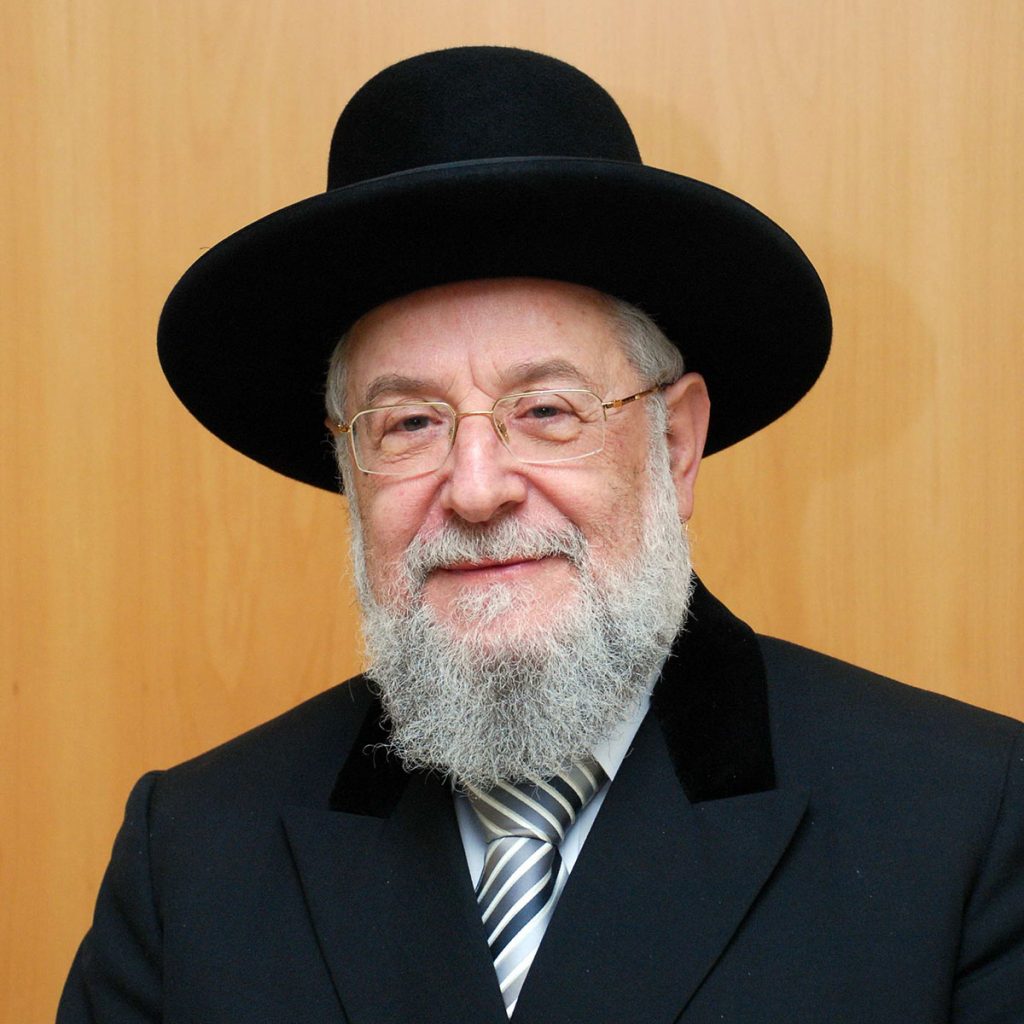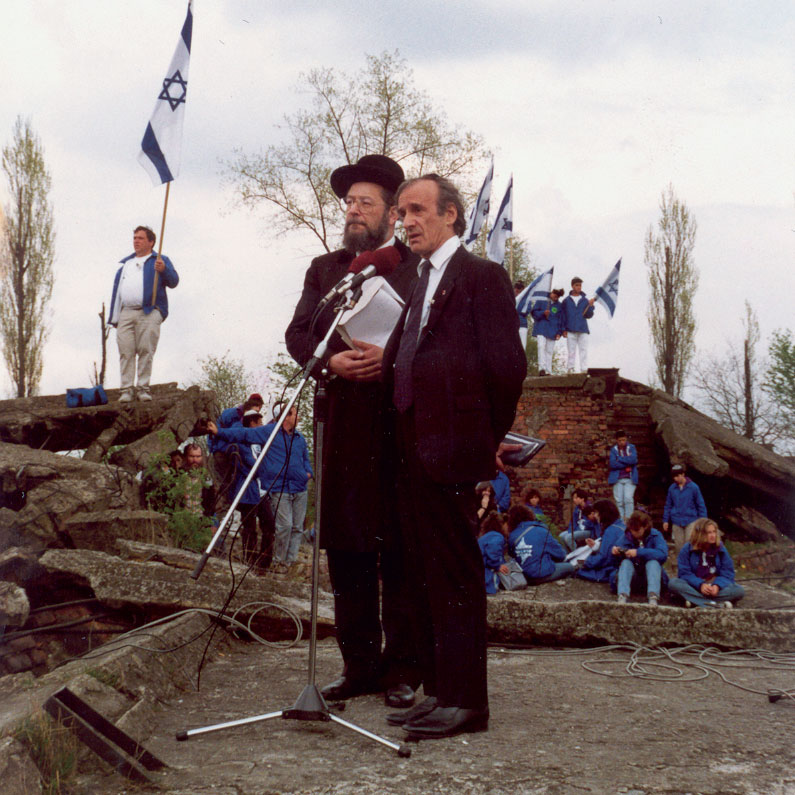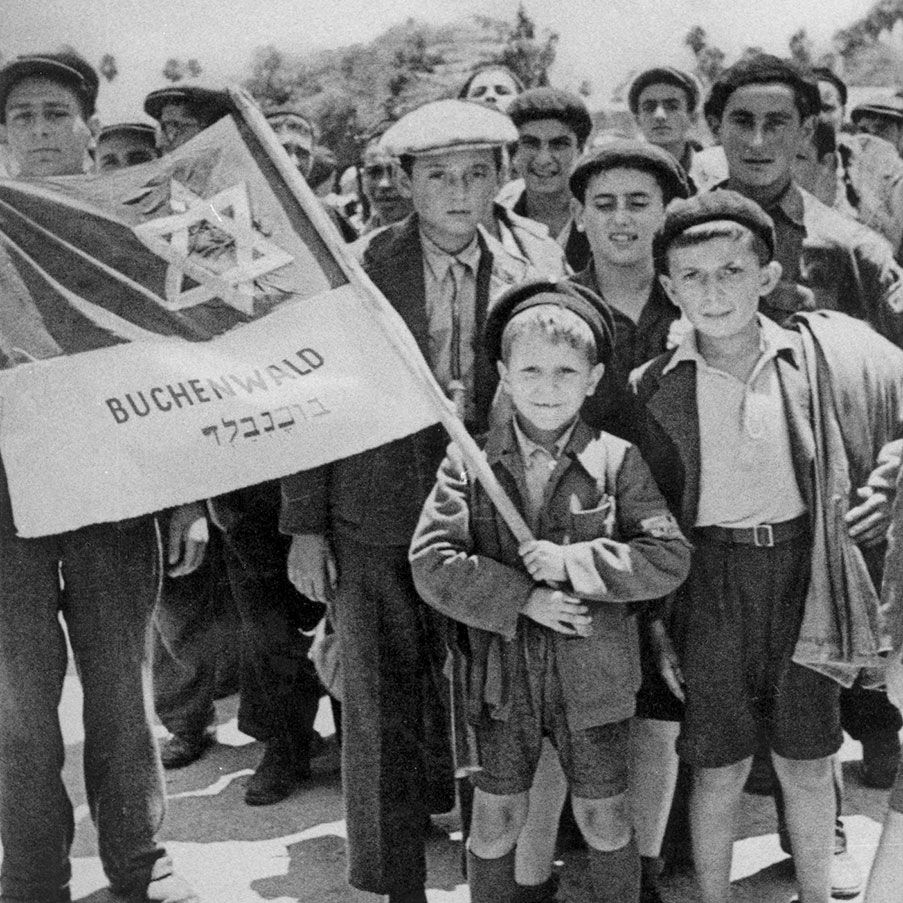

by Dr. Joanna Sliwa
As the Soviet army advanced from the east, the German authorities, with its continued focus on exploiting slave labor, organized a mass evacuation of prisoners from camps in eastern Europe toward Greater Germany. Thousands of emaciated prisoners were forced onto death marches between fall 1944 and early spring 1945. Over 10,000 new prisoners arrived in Buchenwald, raising the number of the camp’s prisoners to over 100,000. Among the new prisoners who entered the camp were the Lau brothers: eight-year-old Israel Meir and eighteen-year-old Naphtali. An English-language testimony that Naphtali Lau (later Lau-Lavie) recorded for the USC Shoah Foundation Visual History Archive in 1997, as well as his memoir, Balaam’s Prophecy, and Israel Meir Lau’s memoir, Out of the Depths, provide more information about the experiences of the Lau family during the Holocaust.
Before World War II, the Laus – Moshe and Chaja, and their three sons Yehoshua (later Lau-Hager), Naphtali, Shmuel, and Israel – lived in Piotrków Trybunalski in Poland. The German mayor of the city ordered the establishment of a ghetto already in October 1939 as the first ghetto in German-controlled territory. Over 20,000 Jews were confined in the ghetto. In July 1941, Naphtali, only 15 years old, was rounded up by the Germans and transferred to Auschwitz, which at that point was not yet a killing center, to perform construction work. Through their extensive network, Naphtali’s parents managed to locate him and arranged to smuggle him back to Piotrków Trybunalski.
In April 1942, the German authorities sealed the ghetto, and in October staged the first major action in which they deported thousands of Jews to Treblinka. Among them was Rabbi Moshe Lau as a leader of the community, and his son Shmuel. In the meantime, Chaja and her youngest son Israel hid together with 12 other people. Naphtali, on the other hand, a worker in the glass factory, was spared. Mass shootings of Jews followed, as did subsequent deportations headed to various labor camps. In the latter part of July 1943, the Germans emptied the ghetto and posted a sign that the city was free of Jews. And yet, two labor camps, a glass factory and a lumberyard, in which Jews toiled remained in the city until November 1944.
It was then that the remaining members of the Lau family were deported from Piotrków Trybunalski. At this point they were separated. On the way to the cattle train, Chaja decided that Israel should remain with his older brother, Naphtali. She believed that the youngest boy would be safer among the men. Chaja was deported to Ravensbrück where she perished. Naphtali and Israel were sent to the HASAG slave labor compound in Częstochowa. There, Naphtali managed to cobble together enough valuables to bribe Germans, and he and other prisoners protected Israel.
In mid-January 1945, they prisoners, including the Lau brothers, were deported from Częstochowa. Naphtali continued to serve as a rescuer of his younger brother, ensuring that they stayed together. After a few days in a cattle train, the Lau brothers arrived in Buchenwald where they were separated. Naphtali continued to perform slave labor. Israel, on the other hand, was taken under the wing of a Russian prisoner, himself a teenager, Feodor Mikhailchenko until liberation by the American army in April 1945.

The Lau brothers suffered losses. They had only themselves. In June, they were taken to an institution run by a Jewish organization to Normandy in France to recuperate. The boys did not intend to return to Poland, they wanted to go to British-Mandate Palestine. Thus, Naphtali reached out to a member of the Jewish Agency to help them, and many other child survivors, fulfill that goal. Only 152 youngsters could be admitted based on the British quota. The group departed France in July 1945. Out of the Lau family, only Naphtali and Israel survived. Their eldest brother, Yehoshua, was studying in a yeshiva in Romania when the war broke out and arrived in British-Mandate Palestine in 1944. Naphtali and his wife had three children and many descendants. He was a respected journalist and accomplished diplomat. He passed away in 2014. Israel Meir Lau is the former Chief Rabbi of the State of Israel and of Tel Aviv-Yaffo. He is married and has eight children and many descendants. He served as Yad Vashem Council Chairman. Rabbi Lau received the Israel Prize for Lifetime Achievement in 2005.
Rabbi Lau never forgot about his wartime rescuer, whom he knew only by first name. It took until 2008 to finally learn Feodor’s last name and locate his descendants. Rabbi Lau was determined to ensure that the person who rescued him in Buchenwald by providing him shelter, food, and support would receive the recognition that he deserved. In his memoir, Rabbi Lau wrote,
I remember my separation from Feodor with anguish, primarily because of the knowledge that I owe him my life and that he risked his life for me numerous times. What I wouldn’t give to meet him and grant him the title of ‘Righteous Among the Nations’ …”
Excerpt from “Do Not Lay Your Hand on the Boy”, by Rabbi Israel Meir Lau
On January 25, 2009, Feodor Mikhailichenko was recognized as Righteous Among the Nations.
